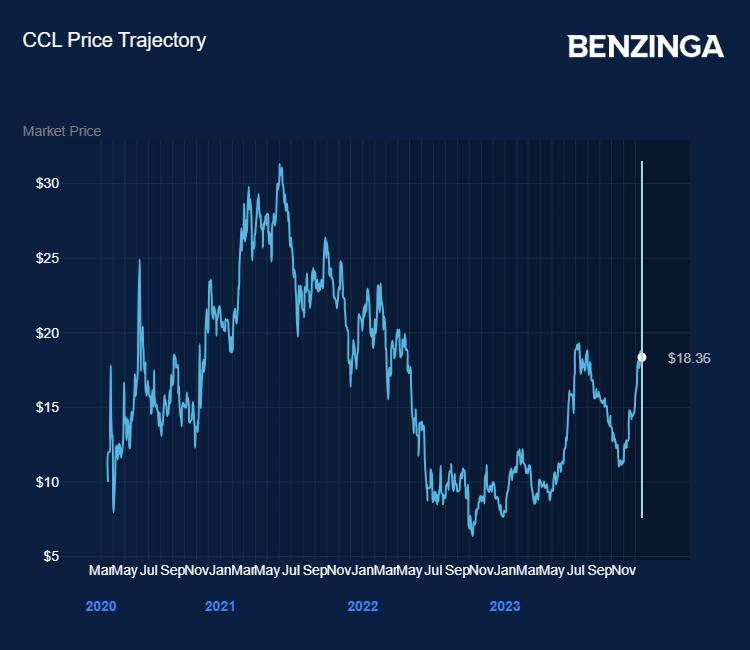Zinger Key Points
- Carnival and Royal Caribbean stocks soar, achieving over 100% growth in 2023.
- Cruise industry's resurgence driven by high passenger numbers and falling oil prices.
- Get access to your new suite of high-powered trading tools, including real-time stock ratings, insider trades, and government trading signals.
The recovery of shares in cruise line operators Carnival CCL and Royal Caribbean NYSE:RCL) over the past year has been nothing short of remarkable. Helped by rising passenger numbers, lower oil prices and the prospects of lower interest rates, shares have more than doubled in 2023.
Many believed the cruise industry faced its end, given the risks of gathering large numbers of older individuals in a limited area for extended periods, creating an environment ripe for the spread of illnesses. However, in the wake of the pandemic, this perception has shifted.
Contrary to expectations, people are eagerly returning to cruises. Moreover, cruise companies emphasize that their clientele is diverse in age; an industry report shows the average cruiser is 47 years old.

Carnival’s Covid Timeline
As cruises were suspended worldwide in mid-March 2020, Carnival borrowed $3 billion from its credit lines to increase its cash position and “preserve financial flexibility.”
At that time, shares had already fallen from a record high of $72 in January 2018 to a 30-year low of $16. By July 2020, Carnival announced it was selling at least 13 ships and an additional two were to be scrapped.
Although sailings restarted in July, the emergence of on-board Covid cases led to the cancellation of all trips until July 2021. By the time sailings resumed in July, the company’s shares had rebounded to $30.
A long and protracted slump between July 2021 and October 2022 followed as cruise lines struggled to regain passengers and quarterly earnings continued to look weak. Carnival shares fell as low as $6.11 in October 2022.
Also Read: Cruising Into Profit – The Resurgence Of High Cruise Ticket Prices
Bounceback In 2023
The industry bounced back strongly in 2023, with passenger numbers getting back up to pre-Covid levels and earnings topping forecasts. Carnival’s third quarter revenues, reported in September, were its highest ever — thanks largely to higher prices.
“The outperformance was driven by strength in demand, with both our North America and Australia segment and Europe segment equally outperforming expectations,” said CEO Josh Weinstein. “I continue to be encouraged with our revenue trajectory heading into next year as we see no signs of slowing from our consumers.”
Carnival’s shares have been among the best performing on the S&P 500 over the year, along with its rivals Royal Caribbean and Norwegian Cruise Lines NCLH. Year to date, Carnival’s stock has risen 128%, while Royal Caribbean jumped 145% and Norwegian Cruise Lines gained 66%. Defiance Hotel, Airline, and Cruise ETF CRUZ, an exchange trade fund whose holdings include cruise line operators, is up 33% year to date.
While passenger numbers have continued to grow, one other factor must also be noted. Carnival, at its quarterly results presentation in September, said its outlook was clouded by rising input costs. At the time, fuel prices — the sector’s biggest input cost — were soaring, with oil prices at year highs close to $100 a barrel.
Since then, oil prices have fallen below $80 a barrel. Furthermore, interest rates are expected to be cut in 2024, which will make debt in the sector a little easier to manage.
Now Read: Goldman Sachs Still Likes Solar Stocks Despite SunPower Collapse Fears
Photo: Shutterstock
© 2025 Benzinga.com. Benzinga does not provide investment advice. All rights reserved.
Trade confidently with insights and alerts from analyst ratings, free reports and breaking news that affects the stocks you care about.